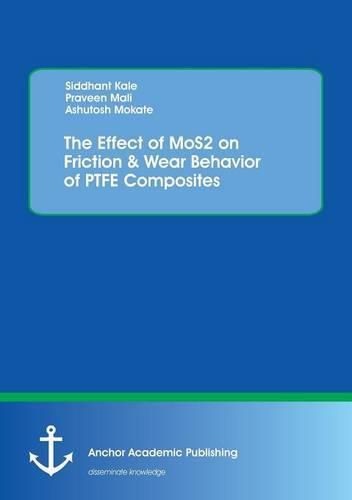Readings Newsletter
Become a Readings Member to make your shopping experience even easier.
Sign in or sign up for free!
You’re not far away from qualifying for FREE standard shipping within Australia
You’ve qualified for FREE standard shipping within Australia
The cart is loading…






This title is printed to order. This book may have been self-published. If so, we cannot guarantee the quality of the content. In the main most books will have gone through the editing process however some may not. We therefore suggest that you be aware of this before ordering this book. If in doubt check either the author or publisher’s details as we are unable to accept any returns unless they are faulty. Please contact us if you have any questions.
The wear resistance of PTFE can be significantly improved by addition of suitable filler materials. Besides the type, the shape and size of the materials added also influence the tribological properties. In the past, research in this area has been confined to the PTFE filled with conventional filler materials like glass fibers, graphite, carbon fibers, etc. However, with the growing demand for utilizing PTFE in a variety of applications, significant effort is needed towards developing the novel composite materials by adding one or more non-conventional filler materials possessing the potential of increasing the wear resistance. It is established that PTFE exhibits significantly low coefficient of friction when sliding against steels. The low coefficient of friction results from the ability of its extended chain linear molecules, - (CF2-CF2) n-, to form low shear strength films upon its surface and mating counter-faces during sliding. PTFE is extensively used for a wide variety of structural applications as in aerospace, automotive, earth moving, medical, electrical, electronics, computer and chemical industries. On account of its good combination of properties, these are used for producing a number of mechanical components such as gears, cams, wheels, brakes, clutches, bearings, gaskets, seals as well as wires, cables, textile fibers, electronic components, medical implants, surgical instruments etc.
$9.00 standard shipping within Australia
FREE standard shipping within Australia for orders over $100.00
Express & International shipping calculated at checkout
This title is printed to order. This book may have been self-published. If so, we cannot guarantee the quality of the content. In the main most books will have gone through the editing process however some may not. We therefore suggest that you be aware of this before ordering this book. If in doubt check either the author or publisher’s details as we are unable to accept any returns unless they are faulty. Please contact us if you have any questions.
The wear resistance of PTFE can be significantly improved by addition of suitable filler materials. Besides the type, the shape and size of the materials added also influence the tribological properties. In the past, research in this area has been confined to the PTFE filled with conventional filler materials like glass fibers, graphite, carbon fibers, etc. However, with the growing demand for utilizing PTFE in a variety of applications, significant effort is needed towards developing the novel composite materials by adding one or more non-conventional filler materials possessing the potential of increasing the wear resistance. It is established that PTFE exhibits significantly low coefficient of friction when sliding against steels. The low coefficient of friction results from the ability of its extended chain linear molecules, - (CF2-CF2) n-, to form low shear strength films upon its surface and mating counter-faces during sliding. PTFE is extensively used for a wide variety of structural applications as in aerospace, automotive, earth moving, medical, electrical, electronics, computer and chemical industries. On account of its good combination of properties, these are used for producing a number of mechanical components such as gears, cams, wheels, brakes, clutches, bearings, gaskets, seals as well as wires, cables, textile fibers, electronic components, medical implants, surgical instruments etc.